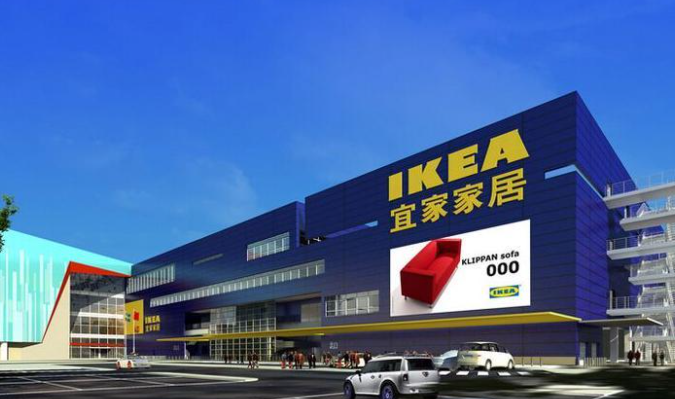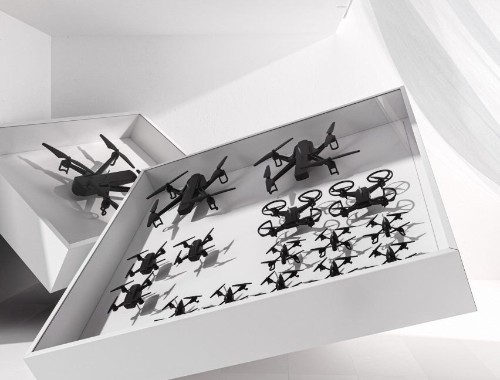IKEA plans biggest change in 30 years
Source:ShanghaiDaily
In two medieval Dutch cities, IKEA’s most senior executives are finalizing the biggest overhaul at the Swedish-born furniture empire in over 30 years.

In two medieval Dutch cities, IKEA’s most senior executives are finalizing the biggest overhaul at the Swedish-born furniture empire in over 30 years.
The aim is to help the world’s largest furniture seller better adapt to changing consumer tastes, manage its increasing size and avoid the fate of other dominant retailers overtaken by new market entrants.
However, some academics say the changes, which effectively involve breaking up the IKEA Group, could also disrupt the smooth running that makes IKEA so efficient.
The IKEA Group announced the plan to transfer ownership of some operating entities to a small Delft-based company which owns the IKEA brand last June. However, the 250-word statement attracted little attention.
The decision to rip up an organizational blueprint drawn up by founder Ingvar Kamprad in the 1980s was taken at a secret meeting just outside Copenhagen in late 2014.
The meeting gathered the board of Inter IKEA, which is chaired by Kamprad’s youngest son Mathias and owned by a Liechtenstein foundation. The little known company currently plays a small operational role in the IKEA universe, employing 1,500 people, compared with 160,000 at the IKEA Group, which is technically a Leiden-based company called INGKA Holding.
INGKA currently manages almost everything that most customers see as IKEA — the stores, furniture design, manufacturing, procurement and logistics. But Inter IKEA owns the rights to the IKEA brand, patents and business processes — collectively considered to be the IKEA “concept.”
Inter IKEA is responsible for developing the concept but its leaders acknowledge this hasn’t changed much in decades and former executives said the unit’s main role was to reduce the overall IKEA tax bill by charging INGKA for the use of the IKEA brand.
At their 2014 meeting, the directors of Inter IKEA unanimously agreed to massively expand its role and take control of design, manufacturing, procurement and logistics from INGKA. Since it owned the rights to the IKEA concept, it could do this. The aim, it says, is to protect IKEA for the future.
“It has been a pretty static concept,” said Torbjorn Loof, chief executive of Inter IKEA Systems BV, the unit that will, in September this year, take on the design and other functions.
There “is always also the risk that you keep that concept, you protect that and make it better and better and better, and things in the world around you happen, and suddenly you stand and say, you know what, this is may be not relevant,” the Swedish-Italian executive said as his boss, Inter IKEA Group CEO Soren Hansen looked on, nodding.
The executives were speaking at the IKEA “Concept Center” in Delft which combines an office wing housing Inter IKEA’S headquarters, and an IKEA store, all clad in familiar blue and yellow corrugated metal sheeting. Inter IKEA uses the store, the only one it runs, to test new ideas such as the high-end bakery recently installed at the exit.
But the IKEA concept needs to change more fundamentally if it is to satisfy the growing number of customers who are requesting IKEA stores in city centers and the ability to buy online and pick up from drop-off points. Loof says he can’t redesign the business concept without control over key functions like logistics.
Get it right
Getting it right is important. New low-margin market entrants and online players like Amazon.com are making life harder for everyone in retail.
“We have been a little bit protected in the home furnishing business, in margin pressure in my view, if I compare with supermarkets or do it yourself businesses,” said Loof, known to colleagues as “Tobbe.”
Over the past five years, INGKA’s margins have been 14 percent, and Inter IKEA’s have been even higher. Supermarket groups like Germany’s Metro AG and do-it-yourself groups like Home Retail Group and Kingfisher Plc have typically enjoyed margins under 5 percent. Amazon’s margin has been under 2 percent.
Organizational change has been discussed before at IKEA. Former INGKA boss Anders Dahlvig, now on the board of Inter IKEA Systems, advocated breaking INGKA into separate North American, European and Asian companies, to make it more manageable. The idea was never adopted.
The current plan follows a 2011 report Inter IKEA commissioned from a French consultancy that highlighted how the structure made it harder for IKEA to adapt to changing market conditions, than comparable businesses.
Under the new regime, INGKA will essentially only manage the stores.
“We will continue to handle the interface with our customers,” said Peter Agnefjall, INGKA Holding’s CEO.
Agnefjall said the narrowing of INGKA’s responsibilities will encourage a focus on its online business. IKEA’s web presence lags rivals, in part because Agnefjall hasn’t yet found a way to achieve strong margins online and a fear that online customers won’t make the impulse purchases they do in-store.
(Source: ShanghaiDaily)





 沪公网安备31010402003309号
沪公网安备31010402003309号



